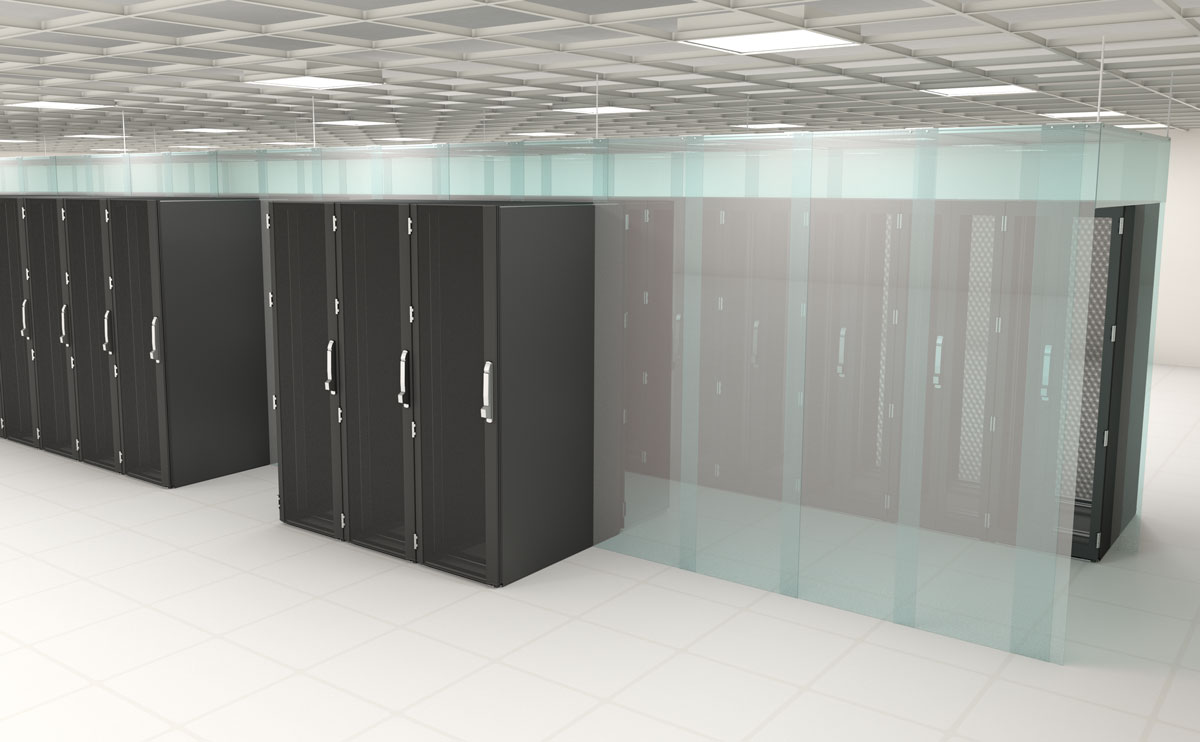Which Aisle Containment Strips are Right for You?


Which Aisle Containment Strips are Right for You?
Energy consumed by data centers to keep their facilities (and racks) acceptably cool can have a huge impact on the company’s bottom-line, overall carbon footprint, and operating costs. One of the most efficient ways to greatly reduce energy usage in a data center environment is aisle containment. This entails the use of aisle containment apparatus like strips, wall panels, doors, ceiling panels, and so forth to create a barrier between exhaust air from hot equipment and cold supply airflow.
Understanding Data Center Containment Solutions
While we don’t want to go into the nitty-gritty of data center containment solutions in this article, it’s worth spending a few moments explaining the key difference between hot and cold aisle containment.
Hot aisle containment is what it sounds like – it’s a data center setup whereby the hot aisle is contained with physical barriers like strips, glass/plexiglass walls, metal panels, or strip curtains as well as the doors. The endgame here is to keep the larger environment cold, and only contain (and therefore get rid of) the hot air before it blends with the room atmosphere.
In cold aisle containment, on the other hand, the configuration is such that the cold aisle is contained leaving the rest of the room “hot.” Of course, this can give the perception that the cooling system in the data center isn’t effective enough.
On the overall, hot aisle containment is preferred by most data centers because of its PUE, efficiency, and cost of ownership benefits. However, both types of aisle containment do come with their fair share of challenges and downsides.
Containment types aside, ensuring optimal cooling results from this aisle containment approach often boils down to choosing the right material for the physical barrier between hot and cold aisles. Today, we are going to look at the pros of one of the most sought-after data center containment solutions – namely containment strips – available to you.

Firstly, What are Containment Strips?
Cool Shield is proud to offer flexible containment strips that enable data centers to contain hot/cold aisles while they minimize higher temp air leakages usually linked to this approach. The company also has versatile channels that help deal with containment above server cabinets. Of more importance to data centers is that containment strips come in two forms: containment strip walls and overlapping strip curtains.
If you need data center containment solutions for the bottom and top zones, then overlapping strip curtains and doors are your best bet (more about this ahead). On the other camp, containment strip walls can attach to the data center floor supports to keep them adequately tight.
Strip Walls vs. Overlapping Strip Curtains: Which Data Center Solutions are Right for You?
Aisle Containment Strip Walls by Cool Shield
Previously, thick polyvinyl carbon (PVC) strips were quite popular as the go-to data center containment solutions, and with good reason. They were effortlessly easy to cut, cheap, and did a bang-up job when it comes to preventing cold/hot air mixing. Unfortunately, they were prone to leaking and their fire rating numbers weren’t exactly something to write home about. This forced data centers to switch to thinner strips with a better rating, but these lighter materials have proven to be ineffective as they buckled in the face of air pressure. That’s where Cool Shield’s strip walls come into the picture. They combine a two-tier design with a higher rating of thin strips.
Key Pros of Cool Shield Containment Strip Walls
- They can be easily custom cut to fit any containment gaps, whether small or large.
- Comes with optional nifty thermal release solution
- Includes detachable mounting brackets (optional)
- When cabinets are deployed, which is the most case for cold aisle containment, these strip walls can be effortlessly cut or removed.
- Floor support can be fitted to prevent air separation due to air pressure (which was the overarching issue with thinner, higher rated strips)
What are strip walls best for?
They are specially designed to help data centers create an effective floor-to-ceiling partition wall between inactive and active spaces. The result is a hot/cold aisle containment solution that’s robustly effective, low cost to run, and easy to customize.
Overlapping Containment Strip Curtains
These strips are much akin to containment strip walls, but they are designed to help take care of containment at the top and bottom to mitigate air loss from separation issues. The bottom of strip curtain is just a few millimeters above the tallest cabinet. As suggested by their name, overlapping curtains are fixed at the bottom and top, and they can be fastened using reclosable fasteners to give room to cables.
Pros Cool Shield Overlapping Strip Curtains
Cool Shield provides data centers with an unmatched quality grade of overlapping strip curtains. These aisle containment solutions come with the following specs:
- Standard widths of 48”, 26”, 14” and 12”
- Air separation loss can be prevented using reclosable fasteners
- They are made from low out-gassing, clear material that’s lightweight to boot
- Best fire rated materials
- A choice of mounting methods such as strutting, drop ceiling, and use of beams
What are Containment Strip Curtains Best for?
If you are looking for vertical strips that overlap to separate exhaust air and data center aisle supply, then Cool Shield strip curtains are your best shot. They are remarkably efficient and effective, as well as lightweight and rated well for fire protection.
So, which data center containment solution will suit your cooling needs?


